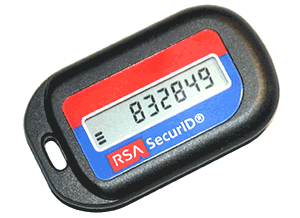Do you know what OTP or one time password is? There are 3 fundamental pillars that a business must take into account for a promising future:
- A quality product/service
- First class customer service
- Credibility.
Digital security belongs to the last pillar. The truth is, this is a determining factor for any company. Especially for those that are dedicated to the provision of services.
The web is full of threats that can effortlessly steal personal information. For this reason, every online business must constantly implement security measures.
The most affected industries are:
- SaaS
- Banking
- Collection companies
- Finances
- Data Protection business
- Cloud services companies
They all have one thing in common: they store personal information about their customers in their servers.
To put this into perspective, if any of that content were to be leaked, it could affect bank account details, addresses, phone numbers and so on of all those users who have an account with your business.
What kind of security methods are out there?
There are many security methods that are used on websites for their user’s accounts to be secured, such as:
Security certificates
These are the SSL and HTTPS protocols that a website must follow for search engines such as Google to consider them secure.
Captcha controls
These are the human verification tests that you get on websites to verify that they are not being manipulated by bots. The idea of these controls is to avoid spam.
Identity verification
This security method works as an extra layer to strengthen a personal account. It also enables many other features that an account without verification does not have. In some platforms such as banking, it is mandatory.
Frequent password changes
In case of static passwords, it is advisable to change them periodically and use combinations such as lowercase letters, uppercase letters, numbers and special characters.
Some security measures correspond to the website, such as the use of a reliable hosting or the use of an SSL certificate on the page. While there are others that correspond directly to the user. Security measures can be as simple as changing antivirus or activating automatic updates.

However, none of them are as effective as those methods in which the user directly requests a temporary code with which he can carry out his activities. That is why OTP keys are so useful, secure and used by the most important financial and service platforms in the world.
Why are OTPs widely used?
OTP stands for One Time Password. It is a numeric code that can only be used once during a transaction to authenticate the user. It expires after 5 minutes. If it has not been used, another one must be requested.
Many organizations, such as banking, use it to replace other security methods, such as coordinate cards.
The OTP gained popularity because it overcomes the shortcomings of normal passwords. Such as:
- Repeatability
- They must be manually updated
- Passwords are vulnerable to keyloggers or malware
- And they can be used indefinitely
In contrast, OTPs are not vulnerable to replication. Since once the password changes, attempts to access with it are useless.
It utilises a system that generates these codes to send them to users. So, they are available to exploit for a short period of time.
Therefore, there are different ways to create an OTP key system. Among which the following stand out:
- The use of an algorithm to generate the password.
- Through time synchronization between an authenticator and the client. Usually, keys of this type are very short-lived.
- Use of cryptographic models to generate a new key. During this authentication, the user creates and shares with the verifier the new code to be used.
- There are now services such as SMS Pro from Octopush that facilitate all this and allow you to implement OTP sending according to your requirements.
What is the purpose of OTP activation by SMS?
The activation of an OTP key serves to increase the protection of user accounts. It is usually used to verify people’s identity, make payments, view or modify confidential information and any other digital activity that is important to protect.
This, in turn, makes software and web platforms more resistant to external attacks, since every time a password changes, access attempts with the same password are rendered useless.

Likewise, if someone manages to save an OTP and seeks access with it after it has been used by its owner, this password will be invalid.
There are some companies that use special devices as “tokens”, such as banks. This way, users can receive new keys every time they want to make an operation.
However, SMS is currently used as the most common means of delivery.
Although this type of security has existed for years, it was not widely implemented. Due to the quarantine, their utility expanded. Now, keys can be sent via SMS in a more accurate and quick way. And from a large number of platforms.
Why is SMS the chosen way to send OTPs?
Because it is a simple means of communication. It allows sending short texts without the need for an internet connection at a low cost.
SMS has been constantly used throughout history to disseminate all kinds of content. From marketing strategies to satisfaction surveys. All thanks to its 98% open rate and 45% response rate.
This is the reason why OTPs work so well in this medium.
This way, a switch from a token generator device to mobile SMS is very useful. As the mobile is a personal device that we all have at hand’s reach at every moment. And unlike the former, it is not easily lost.
One-time password authentication works as follows:
The user may log in to your business’ platform anywhere. Which means introducing their data in a device unknown to them. That is why the generated time-limited password only is valid for 5 minutes or until it is used once.
- The user, whose identity requires verification from your platform, receives an SMS.
- This SMS text includes the OTP key.
- Then the OTP password’s receiver enters it in the corresponding application.
Banking operations commonly use this system. Users can register in digital platforms, request password recovery and, in general, for any two-factor authentication process by SMS.
Some popular examples of OTP via SMS
1. OTP key as a login complement
The OTP key is also used as a security complement for platforms. It is not enough to have a single method to prevent access to our information. Therefore, these codes are used with pins, patterns, static passwords, among others.
An example of this is when, after entering a user’s account, the platform sends an OTP to verify the identity of who is accessing.
This methodology is common in SaaS (Software as a Service). Since many of these companies use programs with very delicate information. Therefore, not anyone must access to them.
A service software that does not have a one-time password would not be completely secure and therefore does not provide confidence to users.
2. Verify that the mobile number is correct
If a new customer registers in your database and gives you an incorrect mobile number, it can be detrimental if you have implemented some SMS marketing campaigns or require to make use of OTP later on.
You could even lose information about an ongoing purchase.
Therefore, to verify that the person is registering with the correct mobile number, it is important to implement OTP to confirm the registration of a new user.
This practice is very common with email, where a verification email is sent with a link. But now that everyone is using mobile as an indispensable tool, it is essential to keep in touch with customers and increase online security.
3. Logging into a bank’s platform
OTPs are usually used on online banking platforms as a means of security.
Users must link a device to the website or mobile application and every time they want to log in through a different device they are asked for this key. It is sent via SMS to the person’s registered number.
In case users don’t to verify their identity, by failing to type the code sent by SMS, they will not be able to access the financial data. And under multiple wrong attempts, the bank will block the account to protect user’s capital.
This code may be necessary to log in or even to make a transfer. It all depends on the person’s security settings.
4. Making online purchases
To shop at most online stores, it is necessary to create an account and add a phone number to verify and receive purchase status messages.
And taking into account that users introduce their financial information to make payments, these sites are beginning to request an OTP to confirm the purchase. This ensures the identity of the person making the transaction.
If the person requesting the purchase cannot verify their identity, the process will not happen. Especially for purchases of larger amounts or large quantities, which could hint some indication of fraud.
5. E-wallets access key
Digital wallets, also known as E-wallets, are digital spaces where you can store current capital, such as dollars, euros, pesos, and also cryptocurrencies, such as Bitcoin, or Ethereum.
Since they store financial data, and allow payments and transfers, these applications apply the OTP function for their access or transactions.
In many occasions the mobile app has an automatic recognition of the key once the notification arrives on the phone, but other times it must be typed in manually.
If the customer enters the code incorrectly, they won’t be able to access to their account.
6. Protecting companies in the cloud
Companies in the cloud, also known as cloud computing, referring to all those firms that provide and manage their resources through the Internet. Some of them are email platforms.
The company’s servers store all information, instead of consuming space on the device from which you are logging in. For this reason, cloud companies have a particular need to be 100% protected from the cyberattacks that occur on a daily basis.
This type of company often uses OTP keys to access the central panel and manage all the data.
If they did not use them, they would be in constant trouble, because hackers tend to improve the accuracy of their attacks. In a worst-case scenario, the cybercriminals may leak all the content from the servers.
How does OTP protect my customers and users?
Typing in a password every time you want to log in to your account may seem tedious, but it is a very efficient and practical security method for several reasons:
- It reduces password theft attempts.
Since it is a password that is valid for a single use and for a short time, it cannot be used repeatedly. Therefore, users are protected from harmful software such as keyloggers.
In addition, sending these codes via SMS adds extra security, making it more difficult to crack. Unless they have direct access to the cell phone before it is used.
- Generates more confidence in users.
As the owner of the phone is the only one who has access to their mobile phone, only they know the password that appears in the message.
This generates an air of confidence in the user when using any platform, since if no one else knows their access data, all their information will be safe. Especially in these uncertain times, where many digital threats and scams have been seen.
In addition, the use of SMS as a means of sending information gives a more professional character to your company making it seem that security is important.
- The use of OTP via SMS has been normalized along with the massive use of cell phones.
It is a secure method to protect important information and your customers. It is fast, inexpensive and does not require internet connection from the user.
SMS Pro offers you this solution along with more features that will allow you to improve the relationship with your customers and convert more.
Contact us through the Octopush Contact section for more information!



